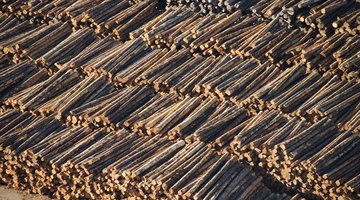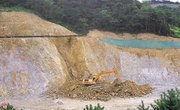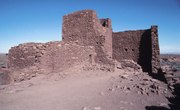The Pacific States -- California, Oregon, Washington, Alaska and Hawaii -- are abundant in natural resources, particularly those capable of supplying energy. The states possess both renewable as well as nonrenewable resources. Different resources are present in certain areas of each of the states and are used for a wide array of purposes.
Definitions and Differences
Renewable resources are those which replenish themselves fast enough to be used in the near future. Hence, in theory, renewable resources can continue to be used indefinitely. Examples of renewable resources include water, wind and sunlight. Nonrenewable resources, on the other hand, will eventually run out, as the Earth cannot replenish them in a reasonable amount of time. For instance, fossil fuels such as coal, oil and natural gas are nonrenewable resources, because they take millions of years to form. Some resources, such as timber, can be placed in either category, because they are renewable if humans replace what they’ve used, but essentially become nonrenewable otherwise.
Renewable Resources
Water is among the Pacific states' most important renewable resources, especially in the Pacific Northwest. In this area, gushing rivers can supply clean energy in the form of hydropower. Water resources aren’t as bountiful in parts of California, where, in dry regions, water is quite scarce but still depended upon for irrigating farmlands and other business and industrial purposes. In Hawaii, groundwater is the prevalent water resource. In coastal areas throughout the Pacific states, saltwater in the form of tides is available as a potential renewable energy source. Wind is another major renewable energy source in the Pacific states. California alone is windy enough to provide wind energy to 11 percent of the world. Certain geologically active sites throughout the Pacific states hold the potential for geothermal energy; one example is the Geysers area, just north of San Francisco. Solar power is also a valuable energy resource in the parts of the Pacific receiving abundant sunshine, such as southern California and Hawaii.
Nonrenewable Resources
Significant nonrenewable resources in the Pacific states can be divided into the categories of rocks and minerals, and fossil fuels. Quarries in Hawaii, California and elsewhere extract stone, sand and gravel destined for building construction. Historically, gold was a valuable mineral asset, particularly in California and Alaska, although the mining of gold has declined extensively since its 19th century heyday. In the 21st century, mineral commodities include uranium, silver, copper, salt, iodine, manganese, tungsten and borate. Although oil, a fossil fuel, exists in other states, by far the largest quantities are found in Alaska, with massive deposits lying on its North Slope. Natural gas, another fossil fuel, can also be found in the Pacific states, with especially large fields existing in California and Alaska.
Potentially Renewable Resources
Timber, highly abundant in the Pacific Northwest, can be considered a renewable resource if forest trees are replanted, but must be classified as a nonrenewable resource if trees are not replanted. In the 19th and 20th centuries, logging was prolific in Oregon and Washington. Operations have scaled back in the times since, due in part to environmental concerns. However, commercial logging still occurs, on a large scale with Oregon, Washington and California the top three lumber-producing states in the U.S. Wildlife -- fish in particular -- are also a significant potentially renewable resource in the Pacific states. Salmon run abound in the rivers of the Pacific Northwest, and a plethora of fish species inhabit the ocean waters bordering the Pacific states. California and Alaska rank second and third respectively in seafood production nationwide. Stocks, however, could become depleted due to overfishing and pollution, meaning that someday fish may be seen as a nonrenewable rather than renewable resource.
Related Articles
References
- Area Development Site & Facility Planning: Regional Review -- Natural Resources Fuel Growth in the Pacific States, Dan Calabrese
- British Broadcasting Corporation: Energy
- University of Washington: Seeing the Forest for the Trees: Placing Washington's Forests in Historical Context
- U.S. Geological Survey National Wetlands Research Center: Pacific Northwest
Resources
Writer Bio
Based in western New York, Amy Harris began writing for Demand Media and Great Lakes Brewing News in 2010. Harris holds a Bachelor of Science in Mathematics from Penn State University; she taught high school math for several years and has also worked in the field of instructional design.











